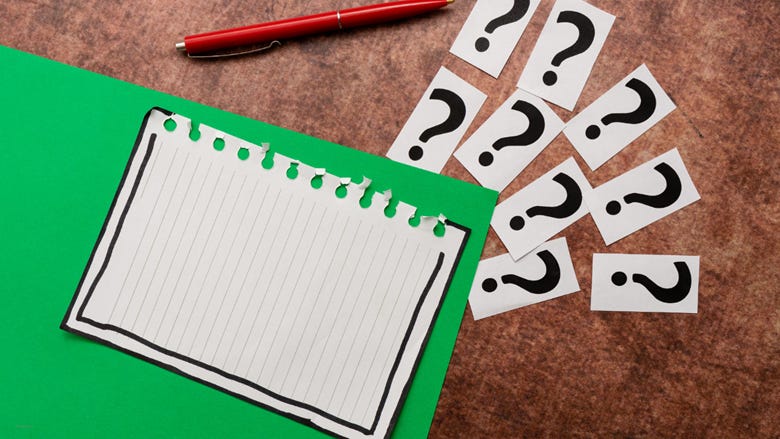Your New Therapist Might Be a Bot—and That’s Not a Bad Thing
Why AI-Driven Therapy Could Be the Most Human Mental Health Breakthrough Yet
In just 4 minutes, you’ll explore how AI is reshaping mental health support—and why that might be a good thing.
Let’s face it. We’re living through a mental health crisis—skyrocketing anxiety, burnout on every level, and waitlists for therapy that stretch for months.
Now imagine this:
You’re spiraling at 2 AM, and instead of doomscrolling, you open an app.
You talk to a bot, but not just any bot. One trained in CBT (cognitive behavioral therapy), trauma-sensitive questioning, and reflective listening.
And… it helps.
Sound weird? Welcome to the age of AI-powered therapy, where bots aren’t replacing humans; they’re amplifying access, speed, and outcomes.
🚀 Therapy at Scale: Instant, 24/7, Zero Judgement
AI mental health apps like Wysa, Woebot, and Tess aren’t here to mimic Freud. They’re built to do one thing well: deliver proven, evidence-based interventions in real time.
Woebot uses daily check-ins, mood tracking, and CBT-informed conversations to help manage anxiety and depression.
Wysa pairs AI chats with optional access to human coaches, blending tech with touch.
In one randomized trial, users of Woebot showed a 34% reduction in depressive symptoms after just two weeks. That's clinical-level impact… without the therapist's office.
🧠 When AI Becomes Your Coach, Not Your Shrink
This isn’t sci-fi anymore. AI therapy isn’t about deep Freudian analysis—it’s about getting you unstuck fast, using behavior science baked into a smart interface.
Case in point:
A UK-based startup deployed an AI therapy assistant for people with mild to moderate anxiety. Results? Faster access to care, 3x higher engagement rates than traditional triage, and a 60% drop in missed follow-ups.
AI doesn’t judge. Doesn’t cancel. Doesn’t raise an eyebrow. And for many, that’s exactly the kind of space they need to open up.
💬 “But Can a Bot Understand Me?”
Short answer: No. Not fully.
But let’s zoom out.
You know what else doesn’t understand you at 100%? That GP who only has 10 minutes. The school counselor is juggling 500 students. The helpline you waited on for 45 minutes.
AI isn’t perfect. But it's improving, fast.
Advanced language models like GPT-4 and Claude now simulate empathy, recognize sentiment shifts, and even adjust tone based on your emotional state. They’re not your soulmate, but they’re increasingly a meaningful step between silence and help.
🌍 Who Benefits Most? (Spoiler: Not Who You Think)
AI therapy is a lifeline for:
People in rural or underserved regions
No therapists nearby? Doesn’t matter. If you’ve got Wi-Fi, you’ve got support.Stressed-out teens and Gen Z workers
They already talk to bots for music, dating, and food delivery—why not mental health?BIPOC, LGBTQ+, and neurodiverse users
Some find it easier to open up to a bot than risk being misunderstood by a human therapist unfamiliar with their context.
And let’s talk cost: Most AI mental health apps are a fraction of the price of traditional therapy, or even free. That’s not just disruption. That’s democratization.
⚠️ Don’t Believe the Hype—Or the Panic
Let’s be clear:
AI therapy isn’t a replacement for trained clinicians. It doesn’t treat psychosis, PTSD, or suicidal ideation. And no, it doesn’t “feel” like a human does.
But here’s what it can do:
✅ Help someone get through a tough moment at 2 AM
✅ Catch early warning signs of depression through pattern detection
✅ Provide structured, proven exercises to regulate emotions
That’s not hype. That’s value.
🔮 The Future? It’s Hybrid.
The smartest models we’re seeing now combine AI with human therapists in a hybrid model:
The AI handles check-ins, journaling, and session summaries.
The therapist focuses on complexity, nuance, and connection.
The user gets faster care, deeper insights, and a system that scales.
Companies like Eleos Health are already deploying AI to transcribe, analyze, and enhance real therapy sessions, making clinicians more effective without replacing them.
🧠 The OG Take: AI Therapy Isn’t About Replacing Feelings—It’s About Reaching People
We’re not here to replace real connection.
But AI therapy is the first light in a long tunnel for millions of people who’d otherwise suffer in silence.
And if you ask me, anything that helps people feel seen, supported, and sane in this chaotic world?
That’s not artificial.
That’s essential.











